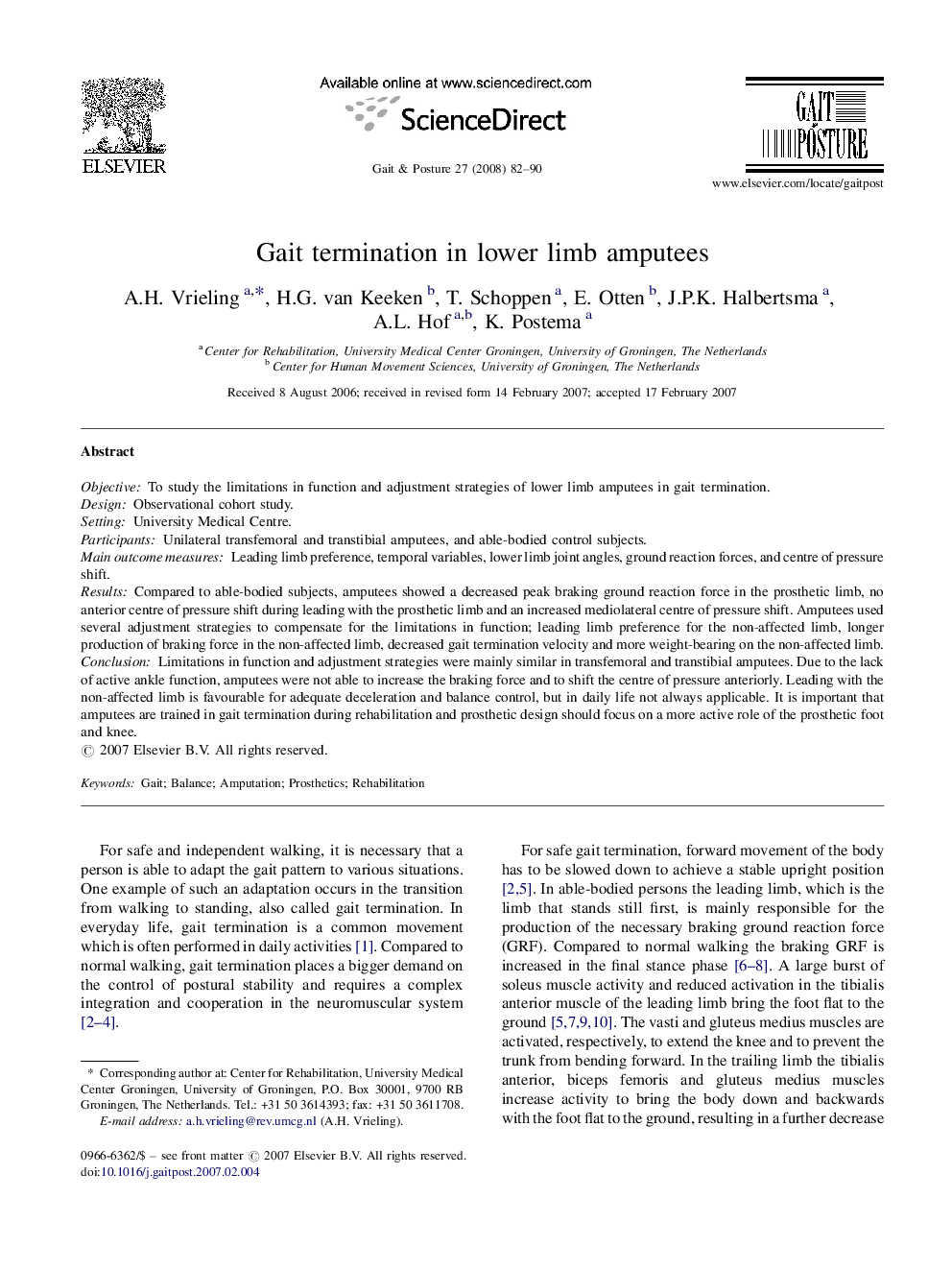| کد مقاله | کد نشریه | سال انتشار | مقاله انگلیسی | نسخه تمام متن |
|---|---|---|---|---|
| 4058310 | 1265713 | 2008 | 9 صفحه PDF | دانلود رایگان |

ObjectiveTo study the limitations in function and adjustment strategies of lower limb amputees in gait termination.DesignObservational cohort study.SettingUniversity Medical Centre.ParticipantsUnilateral transfemoral and transtibial amputees, and able-bodied control subjects.Main outcome measuresLeading limb preference, temporal variables, lower limb joint angles, ground reaction forces, and centre of pressure shift.ResultsCompared to able-bodied subjects, amputees showed a decreased peak braking ground reaction force in the prosthetic limb, no anterior centre of pressure shift during leading with the prosthetic limb and an increased mediolateral centre of pressure shift. Amputees used several adjustment strategies to compensate for the limitations in function; leading limb preference for the non-affected limb, longer production of braking force in the non-affected limb, decreased gait termination velocity and more weight-bearing on the non-affected limb.ConclusionLimitations in function and adjustment strategies were mainly similar in transfemoral and transtibial amputees. Due to the lack of active ankle function, amputees were not able to increase the braking force and to shift the centre of pressure anteriorly. Leading with the non-affected limb is favourable for adequate deceleration and balance control, but in daily life not always applicable. It is important that amputees are trained in gait termination during rehabilitation and prosthetic design should focus on a more active role of the prosthetic foot and knee.
Journal: Gait & Posture - Volume 27, Issue 1, January 2008, Pages 82–90